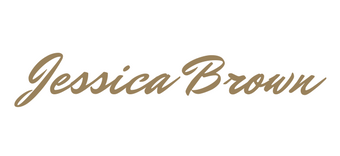Let’s talk about Romaji…
Romaji is the Roman alphabet used to write Japanese words. The good news is, if you are reading this, you already know Romaji. When you are first beginning to learn Japanese, Romaji is the representation of Japanese sounds using the western, 26-letter alphabet. Almost every textbook for learning Japanese starts with Romaji, it is often seen on products, used in advertising, on road signs and Japanese children learn Romaji when learning English in elementary school (don’t get me started on how frustrating it is to teach English when learners want to use Romaji!)
I have been told by a Japanese friend that they sometimes write in Romaji because they think it looks cool, however, writing in Romaji can soon become confusing.
The Japanese language has a large number of homonyms – Words that look the same but mean different things:
Hashi = bridge and chopsticks
Nori = glue and sushi seaweed (you definitely do not want to mix those two up!)
Kami = paper, god, and hair!
Plus, there are a few versions of Romaji! Oh, yes, I am afraid nothing is ever simple with Japanese 😉 If you would like to research this: Go ahead! https://en.wikipedia.org/wiki/
As you progress through Japanese and start to communicate with people online, you might use Romaji to type with your keyboard (see here how I type ひらがなです (hiragana desu) using “Romaji” input).On mobile phones you can type using Romaji or use the kana keyboard instead.
I think it is important to learn Hiragana and Katakana as early as possible for developing your pronunciation. If you are writing with Romaji you are effectively learning Japanese with the accent of the roman alphabet with which you are familiar. You may forget the real sound of what you have written because, well… you know, English and its crazy changing sounds!
For example read ‘take’. Did you just read that as ‘ta ke’ the Japanese word for bamboo or the English ‘take’ – as in ‘take’ a picture? Your brain might default to what it knows best – which will slow your reading.
Get a new alphabet and it is easier to ‘get’ the sounds of Japanese faster.
So let’s dive in!
Hiragana – the first system that Japanese children learn in school but also the system constitutes the very basics of written Japanese.
If you are just starting out with Japanese I would advise starting to learn Hiragana. By learning the correct sounds whilst looking at the correct symbols I believe you get better pronunciation as you have removed the idea’ of the English sounding letters. In effect, these symbols have their own sound and are not then tainted by your use of roman letters. I also found that once I had learnt Hiragana, it helped me with ‘thinking in Japanese’. In general, I have a bias towards learning spoken language, however, once knowledge of Hiragana and Katakana is achieved, reading and then writing become a recognition task rather than a decoding, (I do anything to make my life easier!)
Learn Hiragana by song here: https://youtu.be/OAYWzznNXf8
Katakana – the symbols used to write foreign words and the least frequently used system among Hiragana, Katakana and Kanji. It is used for writing foreign-origin words, names etc. However, botanical and zoological names are also written in Katakana. For example, when human beings are analysed as a species, it is written as ヒト(hito) in Katakana. For example, if a scholar is discussing the number of chromosomes in humans as opposed to some other species, Katakana ヒト is used. However, if you are talking about a person with personality and emotions, who laughs and cries, either Kanji 人 or Hiragana ひと is used. Likewise, when we discuss the monkey as a species, Katakana can be used, but when we talk about the monkey as a lovable animal or as an anthropomorphised character, say, in a fairy tale, we normally use either Kanji 猿 or Hiragana さる. If you use Katakana サル for the monkey, you unintentionally give the impression that you are discussing the animal in the biological/ zoological context. Certainly not as a possible pet or as a possible character in a children’s story.
Learn Hiragana and Katakana
JapanesePod101 on YouTube: https://youtu.be/6p9Il_j0zjc
I used a book ‘Learning the Kana’ which worked really well for me: https://www.amazon.co.uk/
Of course, you might prefer these:
Hiragana https://www.memrise.com/
Katakana https://www.memrise.com/
Once you know and use Hiragana and Katakana well (and keep checking your pronunciation with resources such as YouTube), I believe that you will find it easier to develop a good accent in Japanese and be better understood by native speakers.
What about Kanji? Well, that is a battle I am still fighting! I may have to invite a guest blogger in to talk about Kanji! I will get back to you on that!
Instagram: @Nihongo_Connection
Twitter: @NihongoConnect
Facebook: Nihongo Connection
Pinterest: Nihongo_Connection

Recent Comments